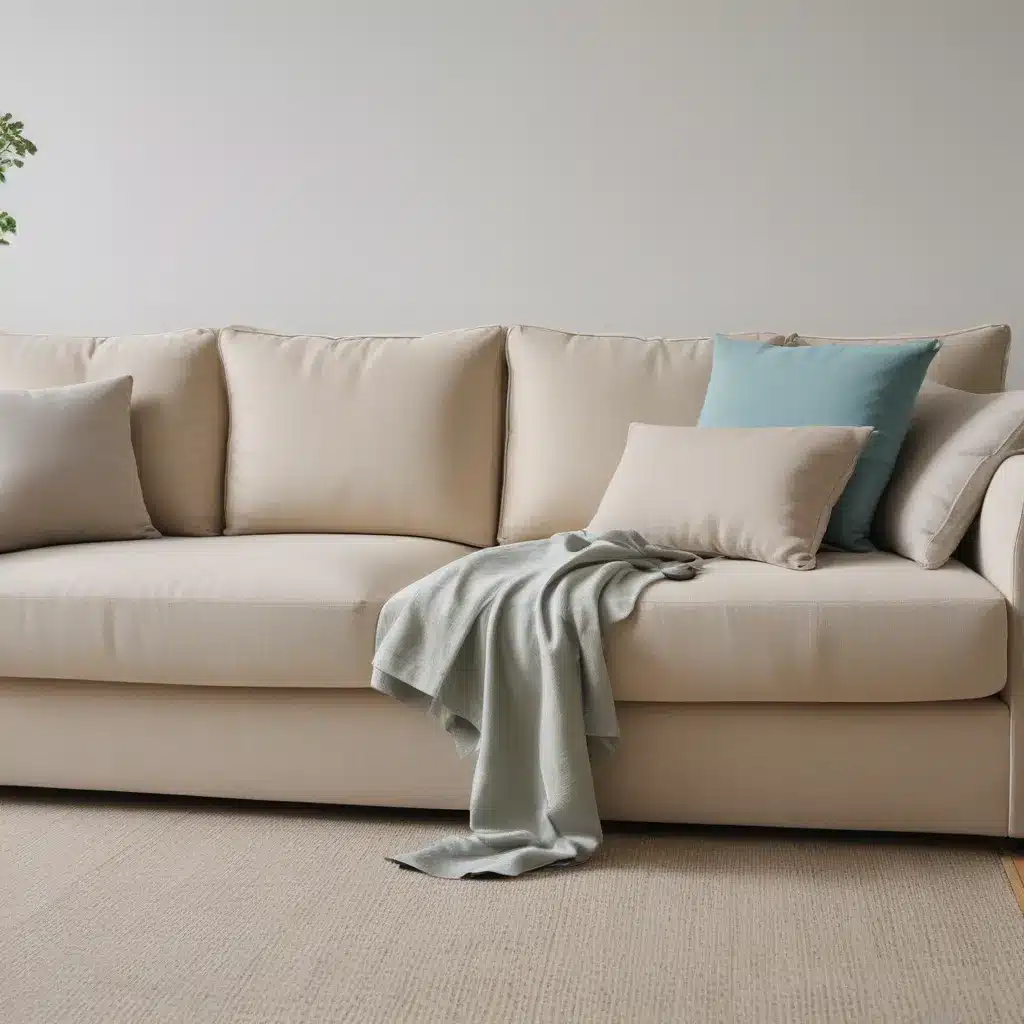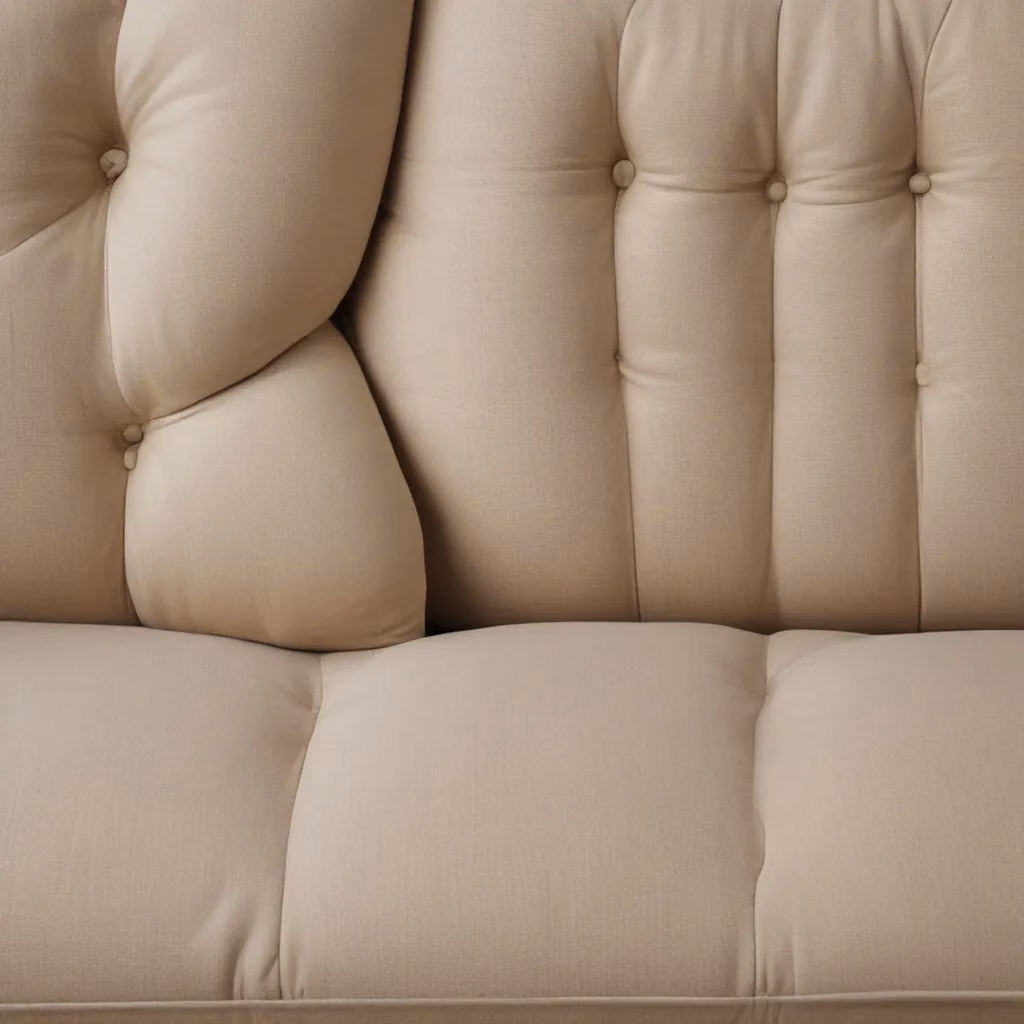Keeping Your Couch Squeaky Clean (Without the Squeaks)
Let me tell you, I’ve seen some pretty wild things happen to sofas over the years. From mysterious stains that appear out of nowhere to the aftermath of a spirited game of “find the pen in the couch cushions” gone horribly wrong. And, of course, who could forget the time my dog decided to use our brand new Sofa Spectacular as his personal chew toy? Needless to say, I’ve had to become something of an expert when it comes to keeping my sofa fabric clean and disinfected without causing any damage.
Now, I know what you’re thinking – “But Megan, how can I possibly disinfect my couch without turning it into a hot mess?” Well, my friends, I’m here to share my tried-and-true tips and tricks to help you navigate the sometimes treacherous world of sofa cleaning and disinfection.
Understanding Your Sofa Fabric
Before we dive in, it’s important to understand the different types of sofa fabrics and how they respond to various cleaning methods. After all, what works wonders on a microfiber couch might be an absolute disaster for a delicate brocade.
Let’s start with the basics:
Microfiber: This synthetic fabric is known for its durability and stain-resistance, making it a popular choice for many sofa owners. Microfiber is generally pretty easy to clean and disinfect, as it can typically handle a little more elbow grease than some other fabrics.
Leather: Ah, the timeless elegance of a leather sofa. While leather is quite resilient, it’s also susceptible to damage from harsh chemicals or excessive moisture. Gentle, specialized leather cleaners are the way to go here.
Velvet: Luxurious and oh-so-soft, velvet sofas require a delicate touch. Overwetting or using the wrong cleaning products can leave your sofa looking like it’s seen better days.
Linen/Cotton: These natural fibers are breathable and beautiful, but they can also be quite delicate. You’ll want to stick to mild, water-based cleaners to keep these fabrics looking their best.
Now that we have a better understanding of the various sofa materials, let’s dive into some effective (and safe!) disinfection methods.
Disinfecting with Confidence
Keeping your sofa clean and disinfected is crucial, especially in these uncertain times. But the last thing you want is to end up with a ruined fabric or a funky chemical smell that just won’t quit. Fear not, my friends – I’ve got your back.
Microfiber Madness
For microfiber sofas, you can’t beat a good old-fashioned mix of warm water and mild dish soap. Gently blot the affected area with a clean, damp cloth, being careful not to soak the fabric. Once you’ve tackled any visible dirt or stains, follow up with a disinfecting spray containing at least 70% alcohol. According to the Reddit community, this simple two-step process is a surefire way to keep your microfiber sofa looking and smelling fresh.
Leather Lounging
When it comes to leather, you’ll want to steer clear of harsh chemicals and opt for a specialized leather cleaner or a diluted solution of mild soap and water. Gently wipe down the affected areas, making sure to avoid oversaturating the leather. For an extra disinfecting boost, you can follow up with a leather conditioner containing an anti-bacterial agent.
Velvet Virtuosity
Velvet sofas are delicate divas, and they require a gentle touch. Start by using a soft-bristle brush to gently remove any surface-level dirt or debris. Then, mix a solution of warm water and a small amount of mild, pH-neutral detergent. Dip a clean, damp cloth into the mixture and gently blot the affected areas, being careful not to rub too vigorously. Once you’ve tackled any stains or grime, finish up with a disinfecting spray formulated specifically for delicate fabrics.
Natural Fibers Nirvana
For linen and cotton sofas, you’ll want to keep things simple and gentle. Begin by using a clean, damp cloth to blot away any visible dirt or spills. Follow up with a mixture of warm water and a mild, plant-based cleaner. Avoid scrubbing or over-wetting the fabric, as this can lead to damage. When it’s time to disinfect, reach for a natural, essential oil-based spray that’s safe for use on delicate textiles.
No matter what type of sofa fabric you’re working with, the key is to be gentle, avoid excessive moisture, and always test any cleaning solutions in an inconspicuous area before tackling the entire piece. And remember, if you’re ever in doubt, it’s always better to err on the side of caution and consult a professional upholstery cleaner.
Removing Stubborn Stains and Spills
Now, let’s talk about those pesky stains and spills that seem to have a mind of their own. Whether it’s a stubborn ink mark or a wayward dollop of pasta sauce, there are a few tricks up my sleeve to help you tackle those tough spots without damaging your beloved sofa.
The Dreaded Ink Stain
Ah, the old “oops, I forgot my pen was in my pocket” scenario. We’ve all been there, am I right? But fear not, my friends – I’ve got the perfect solution. Start by blotting the stain with a clean, dry cloth to remove any excess ink. Then, create a gentle cleaning solution by mixing equal parts water and rubbing alcohol. Dip a clean cloth into the mixture and gently blot the stain, being careful not to rub too hard. According to Quora, this method can be surprisingly effective at lifting even the most stubborn ink stains without damaging the fabric.
Tackling Grease and Oil
Let’s face it, our sofas are often the unsung heroes of our living rooms, providing a cozy spot for us to enjoy our favorite snacks and beverages. But sometimes, those indulgences can leave behind an unwelcome guest – a greasy stain. To tackle this challenge, start by blotting the affected area with a clean, dry cloth to absorb as much of the excess oil or grease as possible. Then, create a cleaning paste by mixing a small amount of baking soda with a few drops of water. Gently work the paste into the stain using a soft-bristle brush, allowing it to sit for a few minutes before blotting it away with a damp cloth. The baking soda’s gentle abrasive properties will help lift the stain without damaging the fabric.
Glue Gone Wild
We’ve all been there – you’re working on a project, and suddenly, the dreaded Gorilla Glue drips onto your beloved sofa. According to the Reddit community, using acetone to remove the glue is a definite no-no, as it can start to destroy the fabric. Instead, try gently scraping away any dried glue with a dull knife or spatula, being careful not to press too hard and risk damaging the fabric. Follow up by blotting the area with a clean, damp cloth to help soften any remaining residue, then dab it with a small amount of mild dish soap and water. With a little patience and elbow grease, you’ll have that sofa looking good as new in no time.
Maintaining a Fresh, Healthy Sofa
Now that you’ve tackled the tough stuff, it’s time to focus on keeping your sofa in tip-top shape. Regular maintenance and proactive care are key to ensuring your couch stays clean, disinfected, and looking its best for years to come.
Frequent Fluffing and Vacuuming
Regularly fluffing and vacuuming your sofa cushions and crevices is an absolute must. Not only does this help keep the fabric looking fresh and inviting, but it also removes any pesky dust, dirt, or pet hair that could potentially harbor bacteria and germs. Be sure to use the appropriate attachments for your vacuum cleaner to reach every nook and cranny.
Spot Cleaning and Disinfecting
In between deeper cleanings, make a habit of spot-cleaning any spills or stains as they happen. The quicker you can address these issues, the easier they’ll be to remove. And don’t forget to disinfect regularly using the methods we discussed earlier. Keeping up with this routine will help ensure your sofa stays fresh, clean, and germ-free.
Professional Cleaning Checkups
Even with the best maintenance routine, your sofa may need a more thorough, professional cleaning from time to time. Consider scheduling an appointment with a reputable upholstery cleaning service every 12-18 months, or as needed, to ensure your sofa is getting the deep clean it deserves. They’ll have the tools and expertise to tackle any stubborn issues while preserving the integrity of your fabric.
Remember, a clean and disinfected sofa isn’t just about appearances – it’s also a matter of health and hygiene. By following these simple tips and tricks, you’ll be well on your way to maintaining a fresh, healthy, and beautiful sofa that you can enjoy for years to come.
So, there you have it, my friends – your comprehensive guide to safely disinfecting your sofa fabric without causing any damage. Now, go forth and conquer those dust bunnies, stains, and germs with confidence! And don’t forget to visit Sofa Spectacular for all your custom sofa needs. Happy cleaning!




